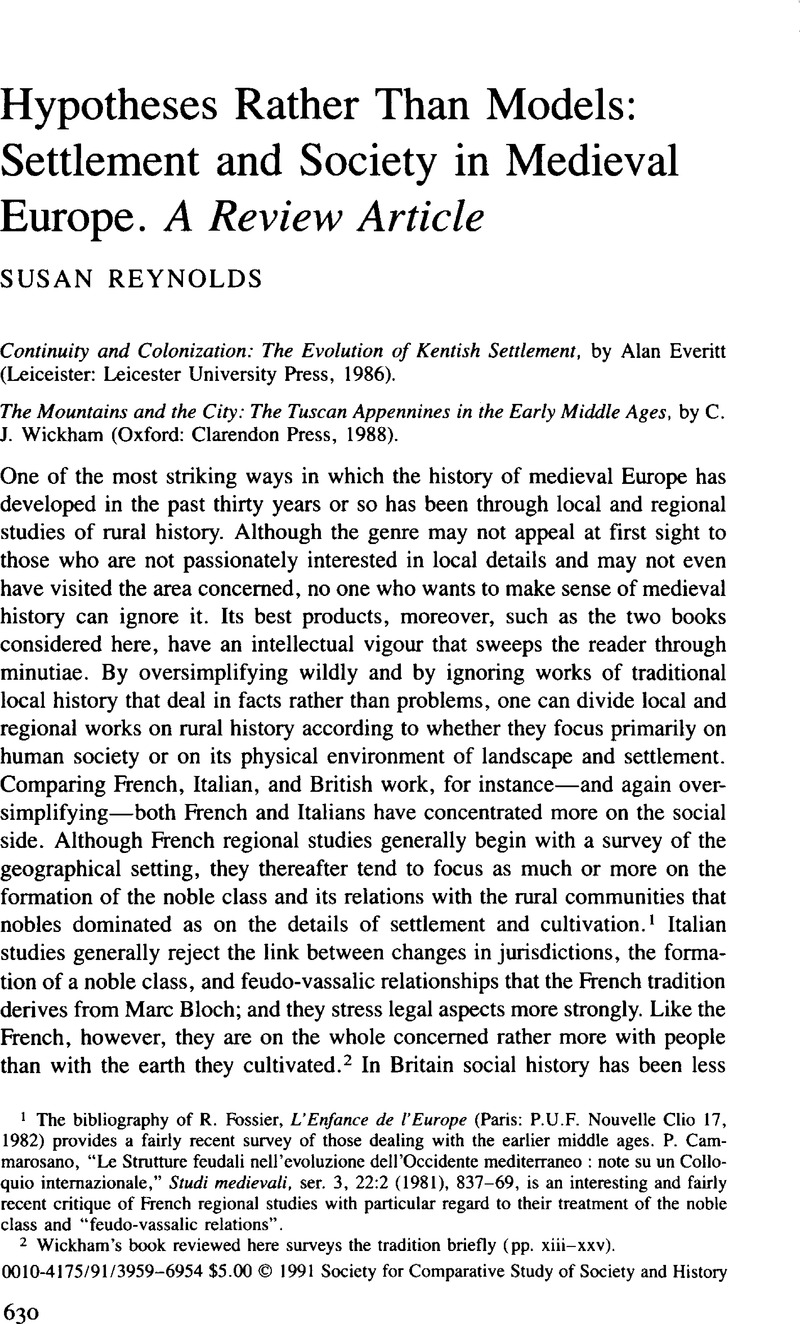No CrossRef data available.
Article contents
Hypotheses Rather Than Models: Settlement and Society in Medieval Europe. A Review Article
Published online by Cambridge University Press: 03 June 2009
Abstract

- Type
- CSSH Discussion
- Information
- Copyright
- Copyright © Society for the Comparative Study of Society and History 1991
References
1 The bibliography of Fbssier, R., L'Enfance de l'Europe (Paris: P.U.F. Nouvelle Clio 17, 1982)Google Scholar provides a fairly recent survey of those dealing with the earlier middle ages. Cammarosano, P., “Le Strutture feudali nell'evoluzione dell'Occidente mediterraneo: note su un Colloquio internazionale,” Studi medievali, ser. 3, 22:2 (1981), 837–69,Google Scholar is an interesting and fairly recent critique of French regional studies with particular regard to their treatment of the noble class and “feudo-vassalic relations”.
2 Wickham's book reviewed here surveys the tradition briefly (pp. xiii-xxv).
3 Recent surveys include Taylor, C., Village and Farmstead: A History of Rural Settlement in England (London: George Philip, 1983);Google Scholar and Rackham, O., History of the Countryside (London: Dent, 1986),Google Scholar though the latter virtually omits settlement from its discussions.
4 Given Everitt's feel for maps and the complexity of his evidence, it is sad that his publisher has served him so badly with maps and footnotes. The decision to save the expense of folded maps by spreading the larger ones over several pages and dotting them through the text would have been forgivable if references to them had been by page number, if the numbers from the diagrams which show the arrangements of the sections of the divided maps had appeared on each section, if all features had been repeated on overlapping portions, and if the names listed on the keys had been arranged alphabetically. Given modem technology, moreover, no publisher should need to put footnotes at the end (let alone without running heads given the pages to which they refer), and no university press should want to do so. A book like this should surely also have a bibliography, if only to avoid the exasperating search for full citations.
5 Like many European medievalists he uses the terms race and tribe (for example, p. 7) in the nineteenth-century manner for groups of common culture, thus avoiding the problem of distinguishing common culture from common biological descent.




